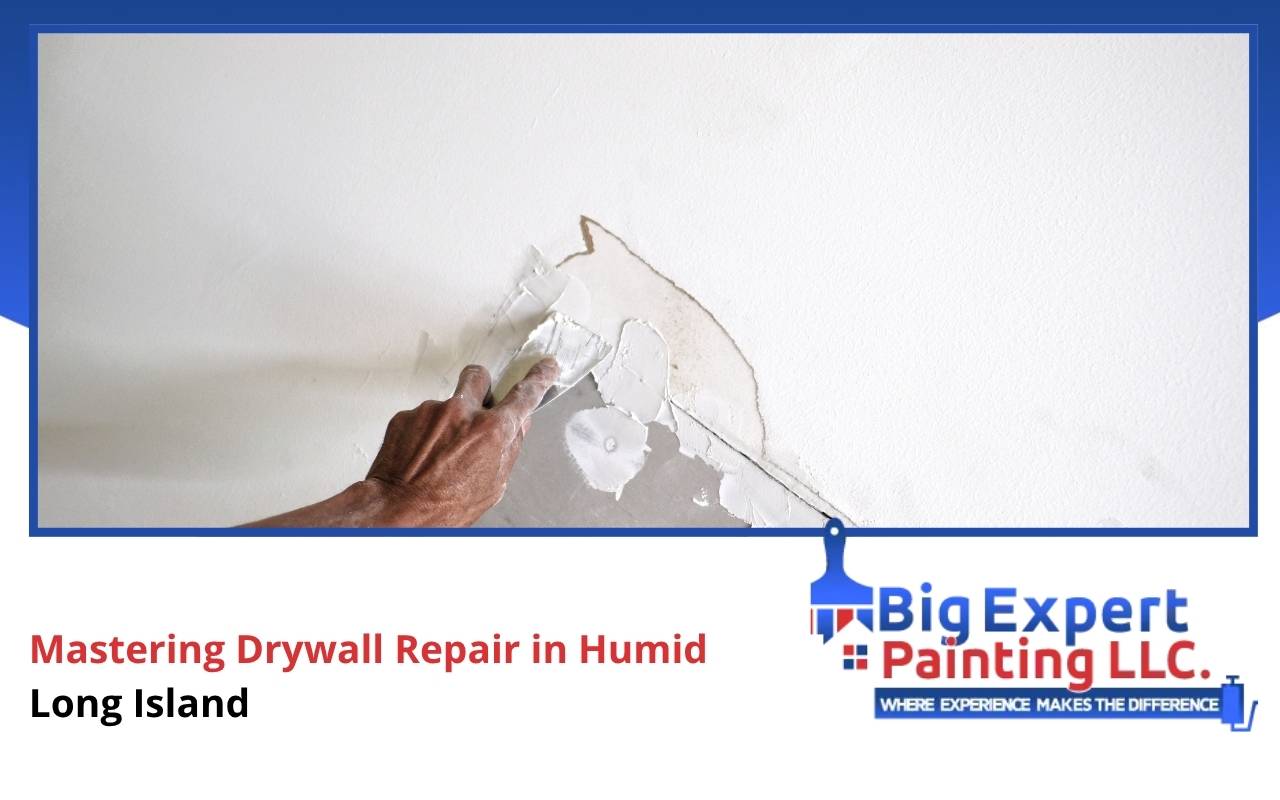
Mastering Drywall Repair in Humid Long Island
Living in Long Island, you know the challenges that humidity brings. It is not just about sticky air; it impacts your home. Drywall suffers under constant moisture. Consequently, you may see water damage, nail pops, or tape issues. When ignored, small flaws escalate into serious repairs. This guide explains drywall repair long island humidity solutions to keep walls strong and attractive.
Identifying Common Drywall Issues in Humid Environments
Humidity creates ideal conditions for drywall problems. Yellow stains signal water damage hidden beneath. Nail pops occur when wood expands and contracts. Tape seams may peel or bubble, creating visible ridges. Even minor uneven textures show moisture infiltration. Recognizing these issues early ensures drywall repair long island humidity strategies succeed in the long run.
- Water stains or discoloration
- Loose tape or cracked seams
- Nail pops forming bulges
Addressing these problems quickly saves money and prevents structural weakening. For more support, consider our commercial interior painting services.
Importance of Promptly Addressing Drywall Damage
Timely action prevents deeper damage. A small stain often hides moisture traveling through cracks. Left unchecked, this creates mold and costly repairs. Repairing drywall immediately maintains structural safety and interior appearance. Drywall repair long island humidity is essential for protecting indoor air quality and property value.
- Preserves home appearance
- Prevents mold and air issues
- Avoids high-cost replacements
To extend protection, explore our commercial exterior painting services.
Materials Needed for Effective Drywall Repair
Preparation matters. Gather joint compound, drywall tape, screws, and knives. Moisture-resistant primer is essential for humid conditions. Dehumidifiers help maintain proper drying times. With these supplies, drywall repair long island humidity projects succeed and provide durable results.
- Joint compound and drywall tape
- Wallboard screws and sanding tools
- Moisture control equipment
Step-by-Step Guide to Repairing Nail Pops
Score around the bulge. Secure drywall with screws near the nail pop. Cover the area with mud and tape. Smooth carefully and sand when dry. Apply primer and paint for a seamless finish. Drywall repair long island humidity projects benefit from screws with strong grip and controlled moisture during drying.
Strategies for Fixing Water Damage on Drywall
Stop the source of moisture first. Remove softened or stained drywall. Apply stain-blocking primer over affected areas. Re-tape seams, apply joint compound, sand, and paint. Mold-resistant products improve long-term protection. These steps ensure water issues do not return.
How to Deal with Stubborn Tape and Spackle Problems
Remove peeling tape and damaged mud. Dry the surface thoroughly before re-taping. Apply fresh compound, smooth edges, and sand. Use a dehumidifier to improve drying. This method ensures proper adhesion and lasting repairs.
Utilizing Stain-Blocking Primer for Long-Term Protection
Stain-blocking primer prevents old marks from reappearing. It creates a moisture-resistant surface. Mold-resistant primers are ideal for humid homes. Proper priming is essential for drywall repair long island humidity resilience and ensures smooth paint application.
The Role of Dehumidifiers in Maintaining Drywall Integrity
Dehumidifiers reduce excess moisture and protect drywall. They help joint compound cure properly and prevent mold. Keep indoor humidity between 30% and 50% for best results. This practice ensures repairs last longer in humid climates.
FAQs About Drywall Repair in Humid Environments
What are common signs of drywall damage from humidity?
Signs include stains, nail pops, peeling tape, and bubbling paint.
Can humidity cause drywall to collapse?
Yes, severe moisture makes drywall soft and weak, risking collapse if not repaired.
Should I only repaint damaged drywall?
No, repainting hides problems. Structural repairs must come first for drywall repair long island humidity solutions.
Do dehumidifiers prevent drywall damage?
Yes, dehumidifiers lower indoor moisture, slowing damage and helping repairs last longer.
How often should drywall be inspected in humid climates?
Seasonal inspections are recommended, especially during peak humidity months.
Preventative Measures to Minimize Future Humidity-Related Damage
Ensure proper home ventilation. Use exhaust fans, maintain roofing, and monitor plumbing. Apply waterproof primers before painting. Clean gutters regularly. These preventative measures support drywall repair long island humidity strategies for long-term protection.
Ensuring the Longevity of Your Drywall Through Proper Maintenance
Durable drywall requires quick repairs, quality materials, and humidity control. Combining inspections, moisture management, and preventive care keeps walls safe. For trusted results, read our customer reviews. Ready to protect your home? Visit our contact page today.
